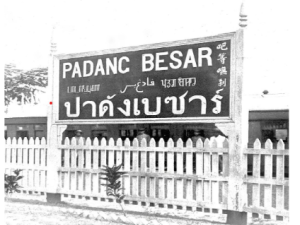Co-written by Harprabhjeet Singh Bedi
The Italian Resistance in World War 2 is a powerful but overlooked tale of devotion, courage, tragedy and ultimate triumph. While many brave soldiers have risked their lives for the country they loved. The Partisan Brigade "Stella Rossa" and an Indian soldier who undertook this harrowing journey did so as part of a covert war of liberation and their story deserves and needs to be told. Even historians in the employ of the CIA indicate that the Italian partisans do not get enough credit for their contribution to the war effort.

The story of Sad Singh in Italy during the Second World War brings out the courage, mettle, the human face and the sacrifices made by "Brigata Stella Rossa" Partisan Brigade. But this glory came at a cost. This privilege should be extended to the Indian soldiers, who throughout the history of the Italy have spilled their blood unflinchingly to protect civil liberties. The story of their bravery and their sacrifice is still talked about in Italian cities and villages that they helped to liberate. However, the full account of their bravery is not available to the wider public.
Sad Singh, an officer who hails from New Delhi. He was attached to a Armoured (Tank) regiment from the 8th Army. He was caught and held in a prison by the Nazis in the Southern Italy. He manage to escape from the Nazis captivity and hid in a train from Florence to Bologna and eventually rescued by the resistance brigade called 'Brigata Partigiana Stella Rossa' in the area between Bologna and the valleys of river Reno and Setta, in medium Apennines.
Sad Singh maintained his identity by wearing turban and maintaining unshorn hair, beard and in his British uniform.
He looked like a man who "had fine features, long hair with beard tied in two braids covered by a turban. In the brigade he was a good tailor too and mended clothing. He loved personal hygiene. Deeply religious, he prayed at length, especially when he entered a church. All partisans respected him and loved him. " ~ Giampietro Lippi, Stella rossa a Monte Sole, Bologna, Ponte nuovo Ed., 1989, p. 394
Sad Singh, joined the Italian partisans carrying out dangerous and under-resourced sabotage operations against the Germans. He played an instrumental role in derailing and obtaining the surrender of German divisions. These actions disrupted the German military forces operating in Italy and ultimately led to their destruction.

The Italian Resistance was one of the most important in Europe. The partisans demonstrated consistent support for the Allies throughout the Italian campaign. Operations behind the lines became crucial after a failed landing at Anzio in January 1945. Until the fall of the Gothic Line in April 1945 the partisans' greatest contributions to the Allied effort were in precision acts of sabotage and their ability to communicate the exact positions of the military targets for Allied bombing raids. Toll of bridges blown, locomotives derailed, odd Germans eliminated, small groups of transport destroyed or captured, small garrisons liquidated, factories demolished, mounts week by week.
The Germans nerves were so strained, their unenviable administrative situation taxed so much further, that large bodies of German and Italian Republican troops are constantly tied down in an effort to curtail partisan activity.
The Monte Sole area had been designated as the area where a German defensive rearguard would be mounted. In this area the "Stella Rossa" (Red Star) was operating under the chief of the brigade Mario Musolesi AKA "Lupo".
The 16th SS Panzergrenadier "Reichsführer" Division of Waffen-SS led by Lieutenant General Max Simon was ordered to carry out a counter-insurgency operation in the region to destroy partisan groups. The partisan activities in the area were regarded as dangerous by the Nazi army because of their location and supply, communication and retreat lines. The operation was carried out by the reconnaissance battalion (Aufklaerungs abteilung) of the division under the command of SS-Sturmbannführer (Major) Walter Reder.

On the morning of 29 September, four Waffen SS Reconnaissance Units left their temporary base in the Setta valley heading for different destinations where the presence of partisans had been reported. Units based in the Valley of the River Reno encircled and combed the area.
On the afternoon of 29 September, the Stella Rossa brigade disbanded and many of the partisans left the area under cover of darkness. As a result by the end of the counter-insurgency operation on October 5, almost all of the casualties were Italian civilians.
The death toll was about 800, including 216 children, 316 women and 142 elderly people. It is estimated that between 10 and 20 partisans were killed and 7 German soldiers. Similar operations took place across the region.
During the course of the war, more than 45,000 Italian partisan fighters were killed, more than 15,000 Italian civilians were killed in reprisals for partisan attacks on German soldiers (mass rapes and looting were also widespread) and more than 40,000 former Italian soldiers perished in concentration camps.
In autumn 1944 Sad Singh crossed the front lines together with some fellow soldiers and joint with the allied forces.
Harchand Singh Bedi ~ [email protected]
Resources: ~
11) Luca Villagood~ Historian Italy.






